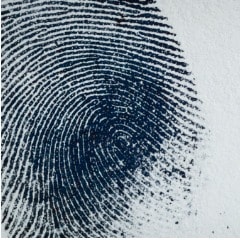 Resources
Resources
At ForensicsColleges, we want to connect students, prospective students, and professionals to the multitude of resources available online in order to stay up-to-date on recent news and trends within the online forensics community. From national news in the industry, cold cases in kidnapping, and top websites for different areas of forensic study, you can always find what you’re looking for here in our resources section.
Further your forensic knowledge and help continue the advancement of forensic research today. For additional information and up-to-date news, follow us on Twitter at @ForensicsEd.

What Does “Defund the Police” Actually Mean?
“Defunding the police” means reallocating some portion of a police budget to community services such as housing, health, counseling, and education. These forms of community service have been proven to lower crime rates while also boosting public wellbeing. Unfortunately, the phrase “Defund the Police” has been subject to politicization and misinformation, and sometimes misconstrued with a call to abolish police departments.

National Criminal Justice Month: An Advocacy Toolkit
Established by the United States Congress in 2009, March is National Criminal Justice Month, and its purpose is to promote societal awareness around the causes and consequences of crime, as well as strategies for preventing and responding to crime.

A Guide to Fingerprints: What Information Do They Hold?
For well over a century, fingerprints have been at the cornerstone of forensic investigations in America. The resilience of this method of identification comes down to a powerful tenet that’s yet to be disproven: no two sets of fingerprints are the same.

Top Cybersecurity Threats to the US in 2021
As computers, smartphones, and networks have become more sophisticated, so have the various types of cyberattacks that they face. And an increasing reliance on connected systems means that a disruption in service can have an enormous real-world impact.

Forensic Genealogy: How In-Home DNA Tests Can Help Law Enforcement
Forensic genealogy is the most powerful tool that investigators have gained in the 21st century, but its quick adoption and lack of oversight have led to some serious debates around privacy and due process.

Cognitive Forensics: Battling Biases in Forensics Analysis
Cognitive science has already been integrated with several other high-risk fields such as medicine, air traffic control, and nuclear power. But a series of failures within the forensic community—many of which came into view with the advent of DNA profiling—have now demonstrated the need for cognitive research into forensic practices, too.

Why Are More Than 100,000 Rape Kits Still Untested?
As a society, we wave off these low conviction rates as cold cases, but often, the victim’s rape kit was never tested in the first place. According to the Joyful Heart Foundation’s “End the Backlog” team, there is a backlog of untested rape kits in the hundreds of thousands that are sitting in police and crime lab storage facilities across the country.

Today, deep convolutional neural networks (DCNNs), which are trained on millions of face images from thousands of people, can recognize faces in highly-variable, low-quality images. But modern facial forensics won’t become an equitable and acceptable practice until the tech, and the people behind the tech, acknowledge their shortcomings head-on.


